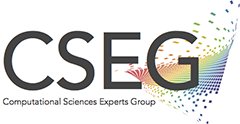Enjoyed Bob Lutz Keynote at the 2013 SAE World Congress. Here are my notes on some key points he touched and thought I’d share them with you.
He was asked to speak on what he would do if he were the king of the automotive industry for a week. He quickly changed that to “Emperor of the US” as just Auto industry wouldn’t be sufficient, and a King would have to deal with Congress.
On CAFE standards:
The CAFE and CO2 regulation is a backward way of going about the problem. “Reducing fuel consumption by forcing automakers to sell smaller vehicles is like fighting obesity by forcing clothing manufacturer to sell only small sizes.” He advocated a gradual national gas tax (~25 cents a year), the money from which could be used to fix roads and bridges. In a decade, this tax will take gasoline prices up to $8/gallon which is in line with the rest of the world. This will drive the consumer behavior towards more fuel efficient cars, and let the market forces work. This shouldn’t be a political impossibility in the US, because Europe has made it work with conservative and liberal parties. Out of $8 / gallon in Europe, half of it is gas tax.
On Diesels
He said diesels did not make economic sense in America because of Diesel’s comparative price with gasoline. US diesel regulation is a lot stricter. He guesses that there is a $2000 premium in base engine costs and about $1500-$2000 premium on achieving emissions. All this for a 20% better fuel economy with a fuel that costs about 20% more than gasoline. “Diesel has a certain cachet in the United States as the intelligent way to save fuel, but it’s mostly psychological.”
On Public Transport
He said the auto industry supported public transport. High speed trains competes with Airline industry not the auto industry. Using Switzerland as an example, he said it has been shown that mass transit does not affect car ownership, though it may reduce the miles you put on the car. And public transport will improve the quality of driving as fewer people would be sitting in traffic.
On Fuel cells
Lutz remained very skeptical on fuel cell technology for automobiles and if there would ever be a suitable infrastructure forautomotive passenger fuel cell vehicles to be broadly adopted. He believed the future would be electric cars, perhaps Lithium Air batteries with 10 times the energy density. Li Air cannot be recharged today but that might change in a decade. A decade ago, Li-Ions were not suitable for cars.
On meeting CAFE standards
In Lutz’s opinion, meeting CAFE standards will cost us $5000 more per vehicle. US EPA debates these numbers but he believes it to be a good estimate. Numerous technologies will have to be adopted to meet the standards including materials (e.g., carbon fiber), advanced transmission and hybridization of the vehicle (might only need a small 7-10 mile range like the plug-in Prius). He foresees all types of vehicles adopting “partial electrification” to get a better MPG on the sticker including full size pick-up, SUVs and Corvettes.
In the long run, when a battery can provide a 300 mile range every morning when you unplug, people would wonder whether they really need a gasoline engine ever, and that would be the tipping point.
